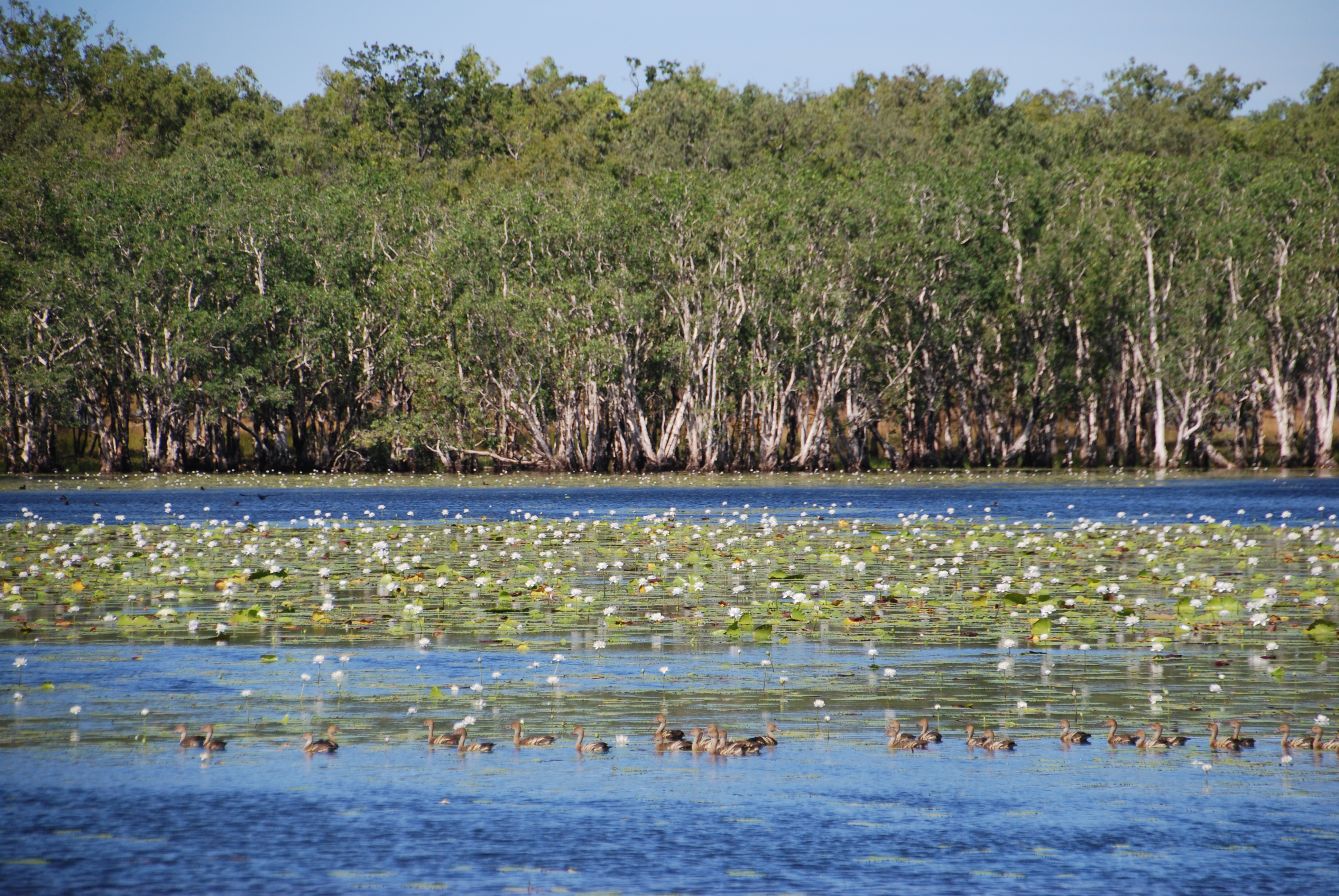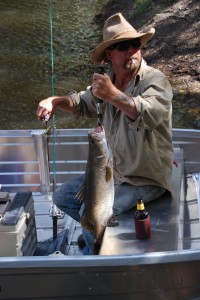Strathburn Station
The remote unpopulated areas of Australia are usually divided up into huge stations which generally run cattle or sheep over vast distances. They feature dry scrubby land, unreliable water and a harsh hot climate. These stations represent a core foundation of how Australia prospered in years past and makes up an essential element of Australia today. The people who live in these remote outback locations are honest hard working tough people who have chosen a life most could not endure. We are fortunate to have such people in our immediate family and had a golden opportunity to visit them in their new habitat. James and Keryn, here we come.
Strathburn Station is a massive 608,000 acres, about 2,500 square kilometres, sitting 120 km north-west of Musgrave Roadhouse in the heart of Cape York. Its main feature is the Holroyd River which runs almost year round and has many associated branches and tributaries. The station has hundreds waterholes that overflow in the wet season and survive the harsh dry season. The land is quite flat and like most of Cape York is mainly covered in dry scrub, endless gums and tall brown grass. It’s a cattle station being restocked with Brahmas and in need of more upkeep. But most of all, it has a unique Aussie beauty to it but demands fortitude, endurance and flexibility for every visitor.
We left historic Musgrave Roadhouse after replacing some of our equipment that was ruined in our horrible roof rack fire and drove the 120 kms across good dirt roads to the homestead of Strathburn Station. Along the way we stopped to pull out and jump start a couple of locals who had a dead battery and were passing the time fishing in a waterhole until someone drove by to help. They were about the only vehicle we saw the entire trip.
Our nephew James earlier this year had accepted the job as general handyman, labourer and ranch hand at this remote station, following his strong interest in the bush and living in the outback. His partner Keryn had recently joined him and the two of them make a hearty and enthusiastic pair of ‘locals’, looking after this vast land, feeding animals, improving the buildings, tending to the various duties that arise daily, working their backsides off as all stations hands do.
Their ‘home’ is a rough old building originally built in the 1940’s, designed to make life easier in the harsh climate with an open kitchen and living area and featuring a flush toilet
and hot shower as long as you build the fire to heat up the water. To be honest, it was a bit run down and one of James’ projects was to use his carpentry skills to spiff it up. Big job but the right guy for it.
We spent three glorious nights there, using the days to explore the property with James and Keryn in the station’s beat up old dusty Suzuki jeep. This was a special experience, seeing this land up close, travelling across the bumpy tracks and stopping at the dozens of water holes that feature on this land. Each waterhole was a story in itself, different shapes and sizes, different mixes of trees, marshes and water lilies, all of them absolutely beautiful. But their main feature, and a highlight of our whole visit to Strathburn, was the birds.
The birds of the Cape York Peninsula are legendary. Nearby Lakefield National Park, which we had passed through in previous days, has vast wetlands that feature a huge range of beautiful birdlife. But Strathburn has an almost equal range of water holes and features an amazing range of birds that make for great fun to spot and identify. Julie in particular has been keen to see and identify as many birds as possible and found kindred spirits in Keryn who also enjoyed hunting with binoculars.
In our days exploring this great place we saw many beautiful birds but the highlights were the Brolgas and Sarus Cranes, Australia’s only two cranes, and the Jabiru, one of Australia’s most iconic birds. These birds travel in pairs and were great fun to watch. Amongst dozens of amazing birds we saw, we also identified multiple types of egrets, the wedgetail eagle, whistling and black kites, kingfishers, huge flocks of red tail black cockatoos (my favourite), pelicans, ibis, rainbow bee eaters, many different types of ducks, cormorants, different types of herons, darters and the blue wing kookaburra. And not to forget the flocks and flocks of colourful galahs.
But it wasn’t all about birds. We had one excursion where we walked down to a large waterhole and spotted freshwater crocodiles and of course there were countless kangaroos and wallabies wherever we went. The property has too many wild brumbies (horses) and is probably most well-known for hunting wild pigs. Hunters pay a big fee to fly in to hunt boars and they are well catered for at Strathburn.
And to make the place almost ‘outback perfect’ the fishing is excellent and the local guys on the property, including James, frequently catch numerous fish in the waterholes, including catfish, saratoga and the most famous fish of Australia – the barramundi. The barramundi is the king of Aussie fish, a fighting fish for the fisherman and one of the most beautiful fish to eat you could imagine. And these guys fish it in their (huge) backyard and cook it on an open fire. Now that’s heaven!
But the highlight of the trip to Strathburn was to spend time with James and Keryn, like many young couplestrying to find their feet in a crazy world, living their dream and having a whale of a time. They work incredibly hard doing a wide range of duties around the station, some of which they had never done before and learning new skills along the way. Such is the need to operate solo in a remote place on such meagre facilities with such a diverse range of tasks. We loved our time there and envied their new life, even if it doesn’t last too long.
As we reluctantly left Strathburn Station we knew this had been a special experience. To see a remote station in full operation, to experience life in such a harsh and unforgiving land, to enjoy good company and see beautiful country, it was all fantastic. We were driving south and further west into the Gulf country, a whole new experience ahead of us but with fantastic memories of our time at Strathburn.














